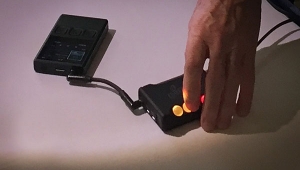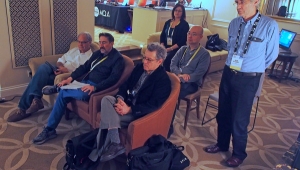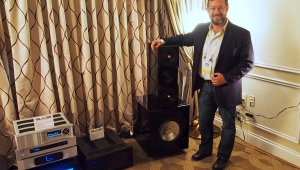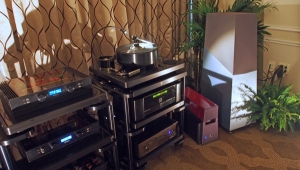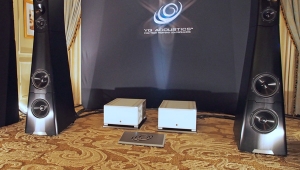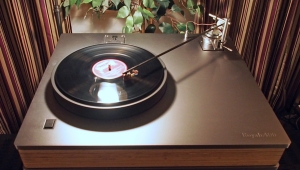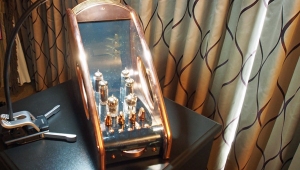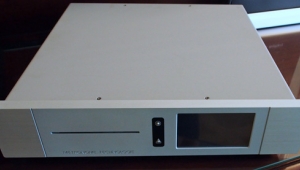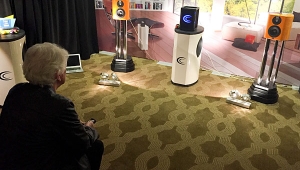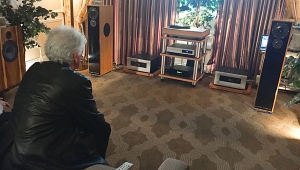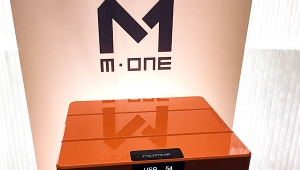| Columns Retired Columns & Blogs |
EgglestonWorks Wows
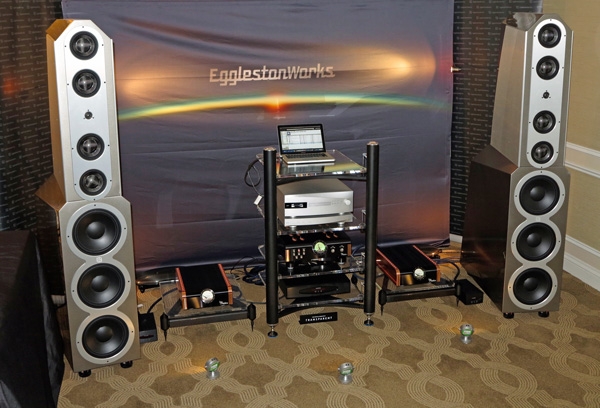
Now this is an interesting one. Using the same Dan D'Agostino Momentum monoblocks ($65,000/pair) as in the Wilson Alexia/dCS suite in the Mirage, albeit with the new case work; the same dCS Rossini player ($28,499) and Rossini Clock ($7499) as in that room, and whose sound I know quite well because I've spent considerable time with the player in my own listening room; an even higher Opus level of Transparent Cabling than in the Wilson/dCS suite; and the not too shabby Dan D'Agostino Master Audio Systems Momentum preamplifier ($32,000), EgglestonWorks' Ivy Signature SE Reference Series loudspeakers ($155,250/pair) made an entirely different impression.
This, it should be noted, is the latest iteration of the Ivy. The first was made for mastering engineer Bob Ludwig in 1998, and designed by a team working with him. Then came the Ivy 2. And now, come 2016, we greet the EgglestonWorks Ivy Signature SE. There may be eight drive-units visible on its face, but behind each 6" midrange are two more mounted in isobaric configuration, and behind each 12" woofer is another 12" driver. The tweeter is higher than in most loudspeakers because Bob usually stands when he does his work. While that implies that owners, too, would be optimally aligned with the tweeter while standing, I instead sat in a chair on the room's higher second level. Owners could always erect a platform . . . ("Welcome to my sound system, dear Anna. Would you like a seat in the Loge?")
In their factory set-up, the speakers are set 12' apart in a room with a 10' ceiling. Here, they were only 8.5' apart, and the ceiling was most certainly lower. In short, a space less conducive to them than the dCS suite was to the Alexias.
I didn't ask what amplification EgglestonWorks uses in-house, but I do know that isobaric loading can present quite a load for an amplifier. (It sure did in the case of my old Talon Khorus X loudspeakers.) Here, however, the D'Agostino Momentums seemed to handle the speaker's challenges with ease. Listening to my Reference Recordings disc of ballet music by Delibes, the orchestra's lower midrange instruments came through in spades, as in exceptionally strong and well defined, and percussion was as tight as it was eye opening . . . As in "Whoa! I've never heard it that strong and pronounced before." (The smaller Raidho speakers I heard the day before also seem especially endowed in this area.) At the other end of the spectrum, the complex texture of massed violins and the complex tone and decay of a single triangle were equal standouts.
But the biggest difference between this speaker's sound and that of the considerably smaller Wilson Audio Alexia—comparing the Ivy Signatures to the Wilson Alexandria XLFs that were not at the show would be fairer—is that the EgglestonWorks presentation was darker. Wilsons give you a prime seat in a live, vibrant hall; from my experience, confirmed in this room, EgglestonWorks goes for a darker, more aged-in-wood sound where the lower midrange predominates.
- Log in or register to post comments

